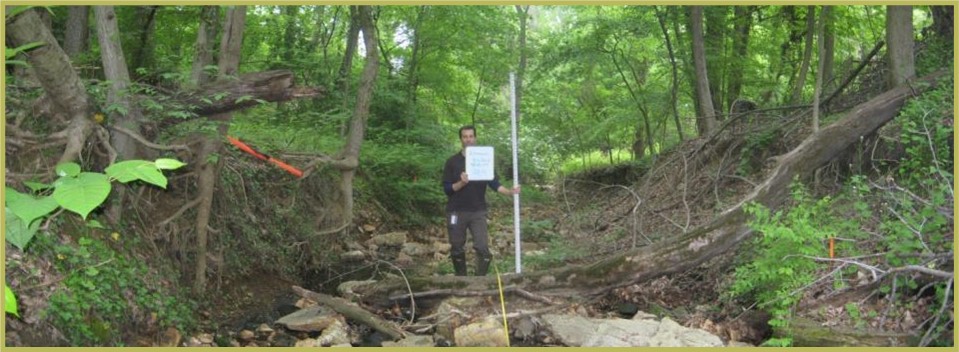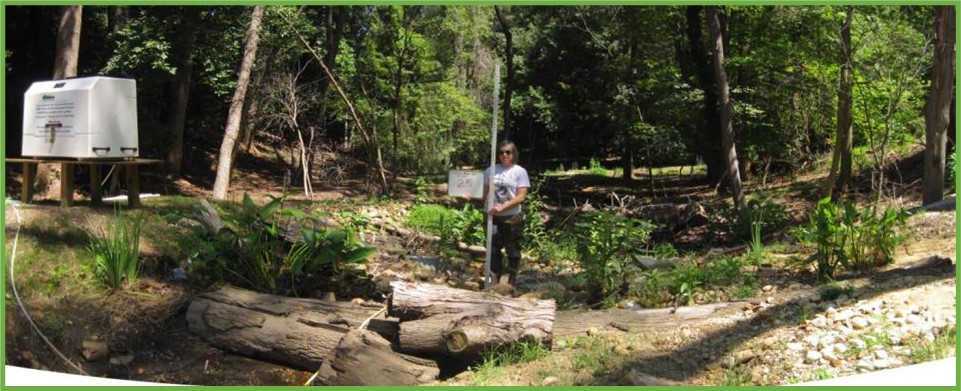<< Back to Stream and Habitat Restoration main page
Location: Linnean Park in NW DC
Project Status: The Linnean Park stream restoration project was completed in August 2014.
Project Overview:
Prior to restoration, Linnean Park was a degraded stream that had incised banks and exposed, leaking sanitary sewer lines. The stream had little base flow, contributed large amounts of sediment downstream, and was virtually lifeless. The watershed area that drains into Linnean Park is 64 acres in size, with 12.3 acres of impervious area (about 20% of the watershed).
The stream restoration project utilized a regenerative stream channel (RSC) design approach to restore the incised channel. The stream restoration work restored 1,000 feet of stream length. More importantly, this project included comprehensive pre- and post-restoration monitoring to determine the effectiveness of the relatively new RSC approach. The total project cost including design, construction, and monitoring was $2,500,000, of which $700,000 came from a competitive grant award from the National Fish and Wildlife Foundation.
Post-restoration monitoring showed that the stream restoration work was highly successful. The RSC installation resulted in an almost immediate 4-foot increase in groundwater levels around the project area. The project also improved the volume and duration of perennial stream flow. Furthermore, water quality monitoring indicated significant reductions in pollutant loads in the RSC reach when compared to the unrestored watershed.
Project Objectives:
- Reduce streambank erosion and channel bed incision to provide long-term stream stability and downstream water quality benefits.
- Study the effectiveness of the RSC approach on water quality, groundwater, stream flow, and habitat.
- Reduce stormwater volume and velocity entering the stream channel.
- Protect DC Water sewer line infrastructure.
- Improve in-stream and riparian habitat conditions.
The District contracted with Biohabitats for stream restoration design and construction and provided a grant to the University of Maryland for stream monitoring work.
Example Pre- and Post-Restoration Photos


Presentations: Chesapeake Stormwater Network – Monitoring Results and Lessons Learned
More information:
- Environmental Protection Agency – Non-Point Source Success Story
- Chesapeake Stormwater Network - Spotlight on the Linnean Park Restoration
- Biohabitats – Linnean Park RSC Overview
- Time-lapse video of Linnean Post Restoration
- Forest Hills Connection – Linnean Park Award Winning Project
Contact Information:
Steve Saari - Associate Director
[email protected] | (202) 535-2961

